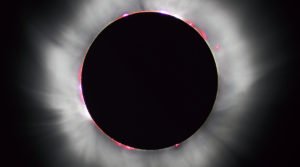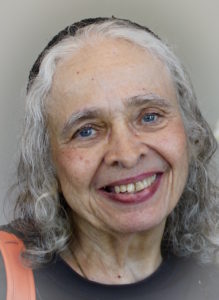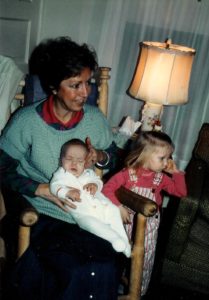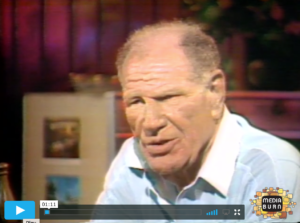C’mon, can a person who can’t see really appreciate tomorrow’s eclipse?
August 20, 2017 • 8 Comments • Posted in blindness, Blogroll, careers/jobs for people who are blind, radio, technology for people who are blind
via Wikipedia
A show called The World aired a story on Public Radio International (PRI) last week about an app called eclipse soundscapes made especially for people who are blind or have visual impairments.
I could see fine when I was a kid, and I watched the total eclipse of the sun on March 7, 1970 using a pinhole camera our school teachers taught us to make out of cardboard shoeboxes. I didn’t look at the sun directly, and I didn’t lose my sight back then! My blindness came 15 years later, due to a totally unrelated eye disease called retinopathy.
When I heard the PRI story was titled “Helping the Blind See the Solar Eclipse” I almost turned the radio show off. Hearing things touted as allowing “the blind to see” like that usually leaves me feeling sad. As cool as this new eclipse app might be for people who are blind, I knew it wouldn’t allow us to watch the eclipse.
But something about this thing being created for “NASA’s Heliophysics Education Consortium” and the Smithsonian Astrophysicalogical Observatory with an astrophysicist from Harvard and co-sponsored by the National Park Service, well, gee whiz, it caught my attention!
The PRI story included a link to a web site for more information about the eclipse, and the wording about the soundscapes app< there is just right. It says that for people "who are unable to see the eclipse with their own eyes, the Eclipse Soundscapes Project delivers a multisensory experience of this exciting celestial event.” Not a word about us seeing the eclipse. They acknowledge we can’t see.
I was so taken by the way this site describes what it will do for those of us who are blind that I’m going to give it a try tomorrow. The site explains that the app includes a narration of the eclipse’s progression in real time and a rumble map that will let us use our sense of touch to “geolocate the user and start the narration to align with the planetary movements as they occur.” What does that mean? I sure don’t know. But maybe I’ll be able to tell you tomorrow.



